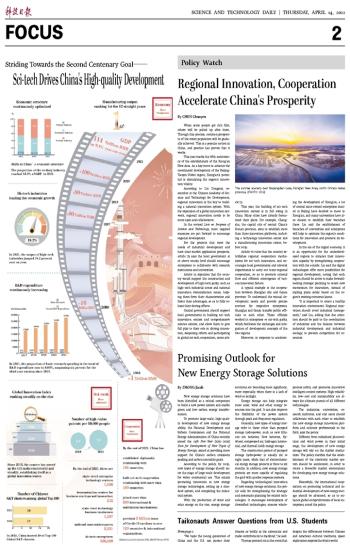
New energy storage solutions have been identified as a critical component to build a new power system and enable green and low-carbon energy transformation.
To promote large-scale, high-quality development of new energy storage ability, the National Development and Reform Commission and the National Energy Administration of China recently issued the 14th Five-Year (2021-2025) Plan for Development of New Types of Energy Storage, aimed at providing more support for China's carbon emissions peaking and carbon neutrality goals.
According to the policy, by 2025, new types of energy storage should enter the stage of large-scale development for wider commercial use. This entails promoting innovation in new energy storage technologies, setting up a standard system, and completing the industrial system.
With the production of wind and solar energy on the rise, energy storage solutions are becoming more significant, more especially, when there is a lack of wind or sunlight.
Energy storage can help integrate more solar, wind and other energy resources into the grid. It can also improve the flexibility of the power system through peak and frequency regulation.
Generally, new types of energy storage refer to those other than pumped storage hydropower, such as new lithium-ion batteries, flow batteries, flywheel, compressed air, hydrogen (ammonia), and thermal (cold) energy storage.
The construction period of pumped storage hydropower is usually six to eight years, while that of electrochemical energy storage projects is three to six months. In addition, new energy storage projects are more capable of regulating the grid with quicker response systems.
Regarding technological innovation of new energy storage solutions, the policy calls for strengthening the strategic and systematic planning for related technologies. It encourages development of diversified technologies, ensures whole-process safety, and promotes innovative intelligent control systems. High-reliability, low-cost and sustainability are always the ultimate pursuit of all different technologies.
The industries, universities, research institutes, and end users should collaborate with each other to establish the new energy storage innovation platform and cultivate professionals in the field, says the policy.
Different from subsidized photovoltaics and wind power in their initial stage, the development of new energy storage will rely on the market mechanism. The policy clarifies that the establishment of the electricity market system should be accelerated, in order to create a favorable market environment for developing new energy storage solutions.
Meanwhile, the international cooperation on promoting technical and industrial development of new energy storage should be advanced, so as to enhance global competitiveness of local enterprises, noted the policy.


 Next
Next




